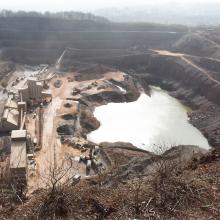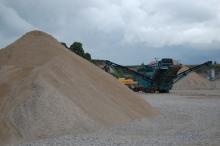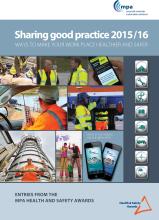
Now is a time of great opportunity but also some important challenges for the UK materials industry – both in terms of supplying demand and ensuring sustainable sourcing. Here, UKQAA technical director, Dr Robert Carroll, explores how the coal ash industry is helping to plug this gap.
Recent figures compiled by the
Mineral extraction, manufacture and supply are the foundation of growth, vital to the construction and engineering sectors and the UK economy as a whole. As the newly launched National Infrastructure Commission sets about getting Britain building, and developers and suppliers in turn race to get projects off the starting blocks, an efficient materials market is critical.
While investment and incentives are key motivators in the marketplace, the old rule of supply and demand is vital to maintaining a stable market – and in these times of rapid growth, it’s supply that’s likely to come under increased pressure.
As the representative of some of the key players in the UK’s construction and engineering industry supply chain, the UK Quality Ash Association (UKQAA) is only too aware of the importance of balancing supply with demand and optimising the market for growth – as without it the sector will struggle to compete. As demand soars and supply chains become ever more lean, one can be forgiven for asking, what’s the alternative?
The response – do what the sector has always done in challenging times; look to innovate and change. Learn from the lessons of the past and find new ways of offering the same, if not better quality and performance.
Take coal ashes for example, their beneficial use in construction materials has merit to a modern, sustainability focused, performance-driven industry. While their use by the construction industry is nothing new, that uptake continues is notable. It shows that for a variety of sound technical, practical and environmental reasons, ash is a sustainable material of the future, based on a proven performance.
The ash alternative
Coal ashes – either fly ash or furnace bottom ash – are produced by the combustion process at coal-fired power stations. A fine dry powder, fly ash is an effective pozzolana, widely used as a partial replacement for Portland cement in the manufacture of concrete.
It may also be used as a fine filler aggregate, either dry or extracted from ash stockpiles across the UK. Furnace bottom ash is a granular material widely used as a lightweight aggregate, particularly in concrete blocks.
It may also be used as a lightweight engineering fill. Both fly ash and furnace bottom ash are by-products which are easy to extract and manufacture and also have low levels of embodied carbon – making coal ashes environmentally-friendly, high-performance alternatives to traditional materials.
For example, if we look at how the ash industry has developed in recent years, it’s become clear that not only is the market for alternative materials growing, but that coal ashes are an important part of this. From 1999-2014, the UK produced between four and seven million tonnes of fly ash and up to one million tonnes of furnace bottom ash. The construction industry has welcomed this supply stream, using up to half of the available supply – and up to 70 per cent in times of growth.
What this has shown is not only are coal ashes viable alternatives in principle, but that its benefits are realised in practice as well.
So what does this mean for an aggregates market looking to capitalise on this time of growth and sustain positive demand?
Diversity is key, and the ash industry can provide a valuable additional supply stream of high-quality, sustainably sourced material. What’s more, not only can coal ash plug interim gaps in supply but the ash industry can also enhance sustainable sourcing in the long term, helping to futureproof supply of aggregates and enable further growth.
For more information on the UKQAA or how you can make use of fly ash, please visit %$Linker:








